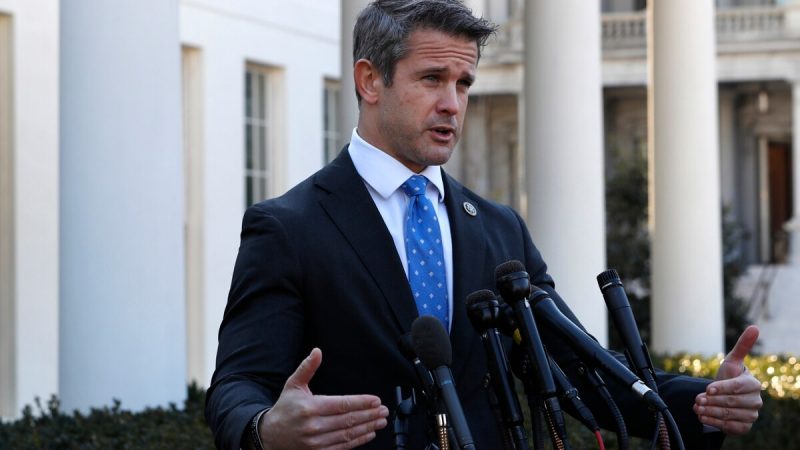Deconstructing The Middle East: Iraq And Syria No Longer Exist, Let’s Stop Pretending They Do

I once was drunk with some friends, and like any easily entertained, intoxicated group of people hoping to prolong the social fun, we searched the apartment looking for inspiration to make each other drink. Someone noticed a world map on the wall, and we decided that a fun drinking game would be to try to hit specific countries on the map with darts, and if someone hit a bull’s eye on their choice nation everyone else would have to drink. Because our trashed brains could not collectively find a flaw in that plan, we sent someone to collect all the darts that he could find.
After thoroughly ruining the map, and the wall behind it, we settled down a bit and stared at the damage. Instead of guilt racking our minds, though, curiosity struck us, and we attempted to figure out in what year the map was printed. We used context clues from borders and countries’ names to guess that the map was printed sometime between the breakup of the Soviet Union but before the Velvet Divorce of Czechoslovakia. Then we noticed Iraq, and, being enlightened drunks, we put down our drinks and sobered up discussing the geopolitical complexities of post-US Iraq and how maps of the future would depict the country, or countries, formerly known as Iraq.
Now this story is mostly made up, but, in a parallel, anecdotal way, so is the country of Iraq.
Iraq should never have existed. Its population is mostly Muslim, of which roughly 60% are Shia and 30% are Sunni. These two Muslim sects are historically neither friendly nor opposed to ethnic cleansing, and Iraq’s bloody history has proven this. The only reason these two groups of non-friends were stuck together in a country was because British imperialists drew arbitrary borders on their post-WWI map recognizing that a great way to maintain relative obedience was to allow the Sunni minority to oppress the Shia majority. As long as Iraqis were fighting each other they would leave the British alone.
This strategy was later reinvigorated by former Sunni dictator Saddam Hussein, who undemocratically and infamously continued oppressing the Shia majority. When America deposed Hussein and set up a new government, the Shia democratically took power and infamously oppressed the Sunni minority, who infamously fought back. When American forces left Iraq after training a majority-Shia army to help Iraq stand on its own, the civil war got worse, Sunni ISIS waltzed in, and the Iraqi army ran home. Now Iran is backing up the Shia majority against ISIS’ ethnic cleansing while the Sunni minority increasingly finds ISIS as a sympathetic defender of Shia occupation.
This short, practical guide to contemporary Iraqi history proves one thing: Iraq is over, and for America to try to reinstall Iraq as a nation with the same pre-ISIS borders is a bad idea. One that will no doubt result in more of Iraq’s famous ethnic cleansing.
So what is the solution? Neoconservatives want to go back to war in Iraq and defeat ISIS with US troops… let’s file that in the “we just learned that lesson” folder. A new war in Iraq will have no different outcome unless the occupation lasts forever. When we eventually leave, the same chaos will erupt and a new ISIS-type will emerge. Neoconservative warmongering is refusal to learn any lessons from history, and there is a plethora of lessons to study from history’s long list of military occupations.
The real solution is to stop pretending that Iraq still exists and to let the Middle East figure out what to do with the pieces. America directly intervening in Middle-Eastern affairs will not solve much, and the terroristic blowback that will result will never end while we continue to meddle. The real solution is for natural self-sovereignty. Iraq has always had unnatural sovereignty, and the best solution is for Iraq to break up.
Now this is a decidedly radical proposition. It means that Shia Iraq will to some degree become a vassal state in an Iranian sphere of influence, and that Sunni Iraq will become some sort of a separate Sunni state, perhaps joined with the Sunni majority of Syria who are themselves oppressed by a Shia minority. It also means that Iraqi Kurds, who make up the remaining 10% of Iraqi Muslims, and Syrian Kurds, who make up 9% of the Syrian population, will break off and create their own Kurdistan state. The former Iraq will essentially become three separate countries, and Syria will split up, too. Sounds radical, however, when you look at the current map of the areas formerly known as Iraq and Syria, this has, effectively, already happened. The radical idea is simply to accept and adapt to reality.
The tricky part is that the Sunni ex-Iraq/Syria state is currently the ISIS Caliphate, but this is where the Middle East needs to get its act together and eradicate the cancer that ISIS has become. ISIS must be destroyed, but to avoid another power vacuum, a genuine Sunni state must be created in its stead. We cannot just glue Sunni majorities back to dominating Shia minorities and hope that civil war will not erupt again. It will. It is much too late for a Czechoslovakia-style velvet dissolution, but a dissolution is still needed. If the Middle East can create a legitimate Sunni state to take over administrative responsibilities as ISIS is evicted, the governmental stability needed to prevent ISIS or another extremist group from returning will be in place.
But again, self-sovereignty is key. To reinstate Iraq and Syria’s previous borders under unwanted Shia rule is to incubate more Sunni extremist groups and plague both nations with more, endless civil war. The Middle-East will always be a mess while self-sovereignty is ignored by illegitimate states with arbitrary borders.
This solution of self-sovereignty has serious ramifications, though, and this is where the idea turns extremely radical. Eastern Turkey is increasingly becoming a state of terror because, like Iraq, it is an amalgam of historical non-friends. Kurds are the biggest minority group in Turkey, which has led to violence and, arguably, ethnic cleansing on both sides, and this has inspired Kurds to want their own country. In effect, to allow Iraqi and Syrian Kurds to create their own nation is to invite Turkish Kurds to secede from Turkey and make Kurdistan much bigger at the geographical expense of Turkey. But is it a bad idea to promote self-sovereignty in order to curb our human pattern of eternal war and oppression? Oppression is a historically ineffective tool with which to govern, and results in a perpetuation of terrorism, war, and general suffering.
Which brings us back to Syria and the quagmire that is has become. Syria’s civil war is complicated because what began as opposition to President Assad’s oppressive despotism has turned into a fractured free-for-all between governmental forces and Shia loyalists, Sunni rebellion groups, ISIS and now-independent Kurds. Assad, in gassing and murdering his own people, has lost the legitimacy to govern. However, it appears that Assad cannot be ousted from power without the same vacuum occurring that we saw in post-Taliban Afghanistan, post-Hussein Iraq and post-Mubarak Egypt, all textbook examples of how neoconservative foreign policy backfires.
Neoconservatives are right that our military can topple any regime, including Assad’s, but they are wrong about what happens next after the consequent destabilization that our military creates. America has no realistic, unilateral military option in Syria, and this, unfortunately, means that we must temporarily compromise the moralistic ideal of self-sovereignty in order to effectively fight ISIS.
Even though it is best for the Middle East long term that Shia, Sunni, and Kurdish groups are separated and allowed self-sovereignty, it is best in the short term that ISIS is stopped. In Syria, ISIS would be the only beneficiary of an ousted Assad regime because if Assad is removed ISIS becomes the sudden dominant combatant in Syria. Arguably, though, ISIS is already the dominant player as it controls large swaths of Syrian territory as well as much of Syria’s gas and oil production, and so maintaining Assad’s government may be the best temporary option we have to defeat ISIS.
Promoting this strategy is Russia, as President Putin intends to keep Russian-friendly Assad in power, at least for the time being, so that the civil war has a Russian-friendly outcome. Syria needs a new president, and Russia should recognize this, but the US is not a major player in Syrian politics and cannot remove Assad by itself. Despite crossed red lines, there is little the US can do against Assad, and there is little that the US should do directly because Syria has been for decades within Russia and Iran’s spheres of influence. Not America’s sphere of influence.
But here is another radical ideal: perhaps cooperating with Russia to kick out ISIS and reinstate Syrian stability is the best way to go about replacing Assad and promoting a more democratic government, rather than the neoconservative method of opposing Russia existentially and declaring war on Assad’s government. The US cannot make the same unilateral mistakes in Syria that were made in Iraq, where the US military de-ba’athed the entire country and erased every trace of administrative government both nationally and locally. This destroyed any chance of interim stability, and when the US dismantled Iraq’s state-run economy the only economic opportunity left for Iraqis was to join local militias, which, of course, led to the sectarian civil war that left Iraq ripe for ISIS’ taking.
The analogous neoconservative plan some conservatives have offered in recent months and years to occupy Syria, evict Assad, throw out his government and hope that democracy blooms with the victorious rebel groups is the same disastrous plan we tried in Iraq. It will not work, and more American soldiers will be sacrificed for military adventurism that has been proven near-sighted and fallacious.
The best solution is first military action against ISIS, and then diplomatic restructuring of Iraq and Syria according to self-sovereignty. This geographic revolution is a daunting task, but it is a much better resolution than gluing Iraq and Syria back together and hoping that they will not immediately shatter again. This undoubtedly will have negative, unforeseen effects, but perhaps a shakeup of the Middle East is necessary in order to realign nations and their borders naturally. This concept of erasing the arbitrary borders imposed by post-WWI imperial powers looking to divide and colonize the region will prevent autocratic, minority governments and dictators from continuing to oppressively dominate majority populations, and it will promote more peaceful Middle Eastern cohabitation.
If the Middle East allows for self-sovereignty, peace has a much better chance of spreading, and without endless, soul-sucking neoconservative occupations.






